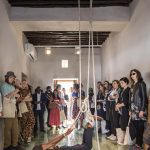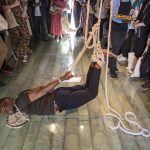Sabor a lágrimas / مذاق الدموع
14th Sharjah Biennial, Bait Obaid Al Shamsi, Sharjah, United Arab Emirates.
Curated by Claire Tancons
During the 19th century and up until the 1930s, pearl diving was the most important industry in the Persian Gulf. During that period, a large number of people were abducted from East Africa and taken as slaves to the United Arab Emirates, mainly to the ports of Sharjah, Dubai and Ras al-Khaimah. In these regions, while slave labor was used in a wide variety of trades, most of the male African slaves were absorbed by the pearl diving industry. Once extracted, pearls were sent to Bombay where they were pierced, graded and exported to Europe for commercialization.
This work takes as a reference to the impact that the slave trade for pearl diving had on the population of East Africa. It reflects on contemporary forms of slavery in the United Arab Emirates affecting migrant workers from Pakistan, India, South Asia, among others. Migrant workers represented the vast majority of private labor and are exposed to exploitation and abuse by their employers.
I remain suspended from the ceiling of the gallery by accessories traditionally used in the pearl diving industry. Around the gallery, African migrant workers offer visitors Arab sweets decorated with pearls from the Persian Gulf.





